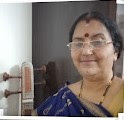Mayamalavagaula makes sense, it is a major janaka raga and the notes are spaced equally in the purvangam and the uttarangam.
Primarily 4 reasons why MMG was chosen.
1.
The spacing between the notes of the first half ( S R G M ) and the second half ( P D N S ) is the same. This means that effectively both halves are mirrors of each other.
2.
3.
The natual oscillatory gamaka present in Carnatic makes it difficult to render ragas like Shankarabharanam or Kalyani for a beginner. MMG lets you skip the oscillation entirely and just sing straight notes. This does not detract from the overall feel of the ragam as it would when singing Shankarabharanam ( it will sound like its being played on a keyboard minus the gamakas )
4.
5.
When Abhyasa Gaanam ( Music for practice and beginners ) was written in the 15th century, MMG was one of the most happening ragas along with several of its children ( Lalita, Padi, Bhouli, Gouri, Gowla, Saveri ). So it was chosen as the default.
6.
7.
If you start with Shankarabharanam, then the intervals between the swaras all sound the same, so when you transition to say HariKambhoji ( Just a N flip ) its almost impossible to learn it properly.
8.
all 3 types of swara spacings are found in MMG (apart from Vivadi raga type spacings). Between S and R - 1 space, between R and G - 3 spaces, between G and M - 2 spaces. Similarly in uttaraangam
if you use R2 and D2, then all intervals are same, making it more difficult to learn other ragas. Nearly every interval is different in Mayamalavagowla, which means more initial difficulty in the beginning, but far easier learning later.
One theory is that Mayamalavagowla is taught first because of the way it is performed on the veena. The first few frets are quite large, and it isn't as convenient to move from sa to ri and pa to da on shankarabharanam (for beginners), because there is another note in between.
But while playing Mayamalavagowla, the frets are next to each other, and so are easier to play for beginners. Once the players get used to this, then they move to ragas like shankarabharanam.
Main reasons is that MMG's gamakams are symmetric in terms of movement... For eg... The movement from S to R is the same as P to D and the movement from G to M is same as D to N.... And if you see gamakams wise... The 4th note in SRGM and PDNS is still so it makes it a very gamaka symmetric raga...
That being said, it's easier to understand gamakams at very beginner stage in MMG than any other raga, and gamakams is the core of Carnatic Music..
Thats why no one teaches you sankarabharanam at this stage coz it is already an evolved rAgam on its own with complex gamakams and phrases... 'Sankarabharanam' heard in western music is called Major scale and is no where close to the raga Sankarabharanam..
Two main reasons can be thought of from the perspective of voice and Veena.
1.
The ragam has notes that are not confusing (meaning there is no scenario where the r can be a g in a different ragam and vice versa), hence it is easy to explain to the learner that r1 is r and g3 is g.
2.
3.
The difference in pitch/frequency between n-s-r, g-m and p-d are such that it trains the mind to distinguish notes that are closest to each other.
4.
starting in Mayamalavagaula for all the reasons listed. Beginners get familiar with semitones.About gamaka in the beginning. Please avoid kampita and jaru in playing varisai. Being able to hold steady notes in perfect alignment with the shruti and steady tala are what's aimed for, along with good voice and instrument technique. Janta varisais are the basis of all gamaka and need to be taught well with proper technique.
It really helps singers to learn an instrument to understand the details - not harmonium. Veena is perfect. Flute or violin are good, but very challenging initially, whereas veena is initiallyquite straightforward.
Once the student starts gitams, the gamakas comes in progressively. Learning gitams in 30 or 40 ragas will lead to internalising a great raga database with the key sancharas at your fingertips. Sankarabharanam is a very complex raga and is not the carnatic equivalent of the western major scale. The gamakas give it a completely different feel.
